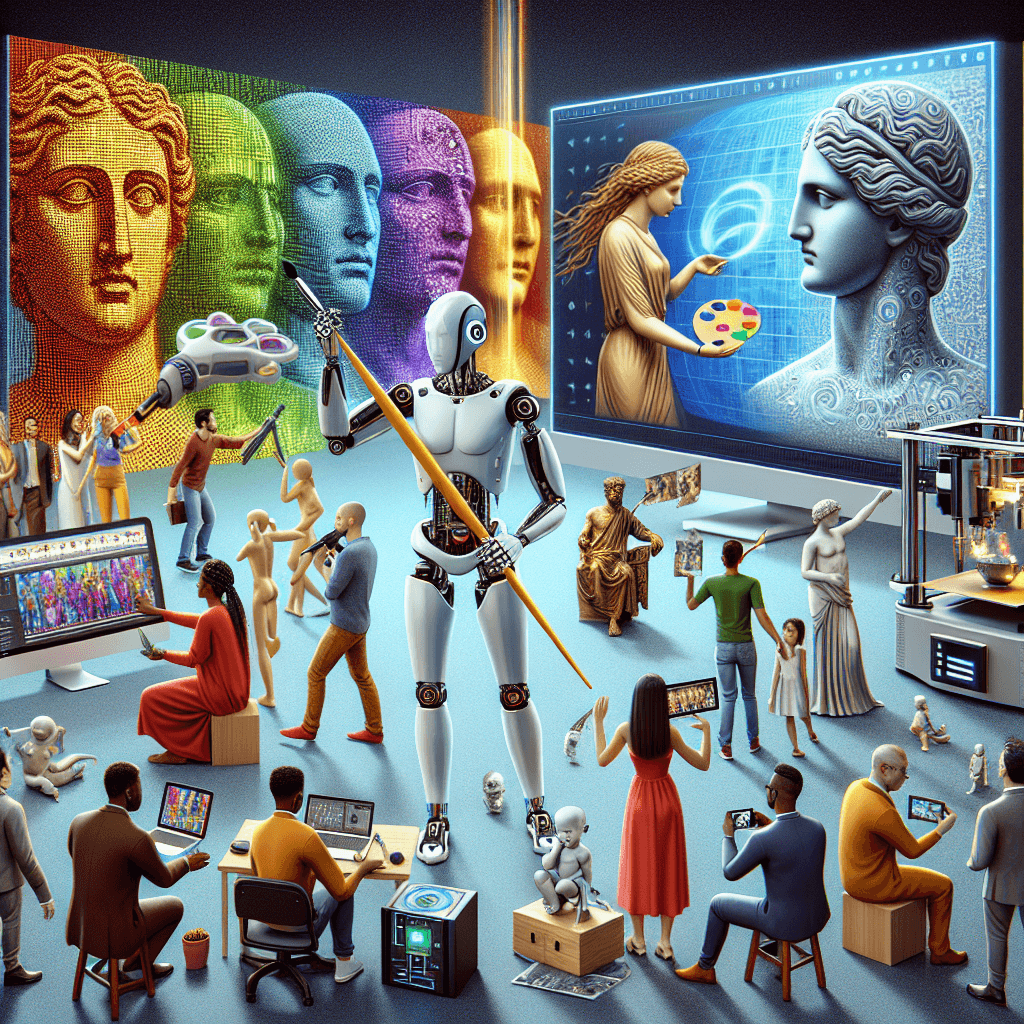How AI is Changing the Way We Create Art and Media
Introduction
Artificial Intelligence (AI) is revolutionizing various industries, and the world of art and media is no exception. From generating music to creating visual art, AI is transforming how artists and media professionals approach their craft. This article explores the profound impact AI is having on art and media, highlighting key examples, case studies, and statistics that illustrate this transformation.
The Rise of AI in Art
AI’s influence in the art world is growing rapidly, with algorithms capable of producing paintings, sculptures, and even poetry. These AI-generated works challenge traditional notions of creativity and authorship.
AI-Generated Visual Art
One of the most notable examples of AI in visual art is the creation of “Edmond de Belamy,” a portrait generated by a Generative Adversarial Network (GAN) developed by the Paris-based collective Obvious. In 2018, this AI-generated artwork was auctioned at Christie’s for $432,500, signaling a new era in art creation.
AI tools like DeepArt and RunwayML allow artists to experiment with styles and techniques, offering new ways to express their creativity. These platforms use neural networks to transform photographs into artworks reminiscent of famous painters like Van Gogh or Picasso.
AI in Music Composition
AI is also making waves in music composition. Tools like AIVA (Artificial Intelligence Virtual Artist) and Amper Music enable musicians to compose original pieces with the help of AI. These platforms analyze vast datasets of music to generate compositions that can be customized to fit specific moods or genres.
For instance, AIVA has been used to compose soundtracks for video games and films, demonstrating AI’s potential to assist in large-scale media projects.
AI’s Role in Media Production
Beyond art, AI is reshaping media production, from content creation to distribution. AI technologies streamline processes, enhance creativity, and improve audience engagement.
Content Creation and Curation
AI-driven tools like Wordsmith and Articoolo assist writers by generating articles, reports, and even poetry. These tools use natural language processing (NLP) to create coherent and contextually relevant content, saving time and effort for media professionals.
Moreover, AI algorithms help curate content by analyzing user preferences and recommending personalized media experiences. Platforms like Netflix and Spotify use AI to suggest movies, shows, and music based on individual viewing and listening habits.
### Video and Film Production
AI is also transforming video and film production. Tools like Adobe’s Sensei and IBM’s Watson are used to edit videos, enhance visual effects, and even predict audience reactions. AI can analyze scripts to identify potential plot holes or suggest improvements, streamlining the production process.
In 2016, IBM’s Watson was used to create a trailer for the horror film “Morgan.” The AI analyzed hundreds of horror movie trailers to identify key elements that make them effective, resulting in a trailer that was both engaging and innovative.
Challenges and Ethical Considerations
While AI offers numerous benefits, it also raises ethical concerns. Issues such as copyright infringement, the authenticity of AI-generated art, and the potential loss of jobs in creative industries are hotly debated topics.
Artists and media professionals must navigate these challenges by establishing guidelines and ethical standards for AI use. Ensuring transparency in AI-generated content and recognizing the contributions of human creators are essential steps in addressing these concerns.
Conclusion
AI is undeniably changing the landscape of art and media, offering new tools and opportunities for creativity and innovation. From generating visual art and music to enhancing media production, AI is pushing the boundaries of what is possible. However, as we embrace these advancements, it is crucial to address the ethical implications and ensure that AI serves as a tool to augment human creativity rather than replace it.
As AI continues to evolve, its role in art and media will undoubtedly expand, challenging us to rethink our definitions of creativity and authorship. By embracing AI responsibly, we can unlock new possibilities and enrich the cultural landscape for future generations.

Author: Joe Najeme



